
Contents:
1. The Future of coldspur
2. On the Archives
3. The Biography of Ter Braak
4. George Graham & “The Spies’ Spy”
5. Paperback Editions
6. The Non-Communicants
7. Guy Liddell’s Diaries: TWIST and Scout
8. In Memoriam: Geoffrey Elliott (1939-2021)
9. Philbymania
10. Letters to the Editor
1. The Future of coldspur
In headlining this section, I am not raising questions about the future of coldspur the blogger, but coldspur the website. Having just achieved my seventy-fifth birthday, I believe that I shall remain in control of my faculties for a few more years before I prepare to join the ranks of the great conspiracy theorists in the sky. Moreover, I have plenty of material to keep me occupied at least through 2022, and am looking forward to several more years of doughty research and spirited writing. And the publishing model will not change. Readers will not be asked for donations; coldspur will not carry advertisements; I shall not be moving coldspur to Substack. This is my hobby, and I shall carry on my practice of publishing monthly bulletins on intelligence matters, with the occasional self-indulgent foray into personal memoir, without worrying about revenues, popularity ratings, or commentary in the Twittersphere.
Yet what will happen to www.coldspur.com? I know that there are mechanisms on the Internet that store all content in some dark place, but I should like the coldspur archive to be available for future researchers even if I am not around to husband it. As new files are released to Kew, and younger students assume a role in reconsidering MI5’s history, I should like them to be able to tap in to my hypotheses and conclusions, which will presumably not be published anywhere else. To begin with, it presumably means that the domain name has to be maintained, through annual payments to GoDaddy. For the url to be active, it has to have a paid-up agreement with a hosting site, as I have arranged with a company down the road in Ocean Isle. That sounds minimally satisfactory, even if I make testatory arrangements for payments to continue for a number of years. I would much prefer some respectable institution to take coldspur under its wing, and make it available via its native directories, such as the Hoover Institution Library and Archives at Stanford University, or the Bodleian, or Churchill College, Cambridge. Does any reader have experience with any such arrangements, and would he or she be able to advise me?
And then there all my personal files – and my library. I am no longer confident that the Ethel Hays Memorial Library at the University of Eastern Montana in Billings (see https://coldspur.com/homo-sovieticus ) will be a suitable repository for my collection, and it would probably be too far off the beaten track for all but the most intrepid researchers. I have files of electronic correspondence, notes taken from hundreds of books, chronologies, etc. etc. which I am not keen to share without constraints while I am still active but should, I believe, be most useful to posterity. Added to that are numerous articles and clippings that I have collected, in paper format, as well as a library of about 7,500 books, primarily on intelligence matters, general history, and biography, but also comprising a rich set of rare titles in poetry, literature, humour, language and reference. I would guess that the section on intelligence matters is unmatched in any private – or even institutional – collection. I should hate to see it split up and dispersed. My obvious choice would be to donate it to the University of North Carolina in Wilmington, NC (about thirty-five miles away), since that institution has connections with the CIA, and I have used its facilities over the past twenty years. I understand that I would have to set up an endowment to house and maintain the library. I started to approach the University on this topic a few years ago, but my contact moved on. I shall retry in 2022, conscious of the following: “ . . . no one cares about a library collection as much as the person who has assembled it . . . one man’s passion project would be nothing but a burden to whom the responsibility of curation was passed on.” (Andrew Pettegree and Arthur der Weduwen, in The Library)
Meanwhile, I am considering a number of projects for 2022. I have several more episodes in the Déricourt saga to unroll. I need to report on my discoveries concerning the life and career of the SOE officer George Graham, aka Serge Leontiev. I hear the call to follow-up on my investigations into ELLI, and explore the indications of treachery in MI5 that so excited Peter Wright and Chapman Pincher, and later Nigel West. I still have to study the records concerning the post-war activities of Roger Hollis, how close he was to the functions of counter-intelligence against the Soviets, and how MI5 evolved its organization during those years. I want to return to Alexander Foote, the peculiar interest he showed in the Gouzenko trial, and the links between Canada and Switzerland in passing money to the Rote Drei. There is further research to be performed on Claude Dansey and his attempt to make contact with anti-Hitler factions in the Wehrmacht and the Sicherheitsdienst. I recall numerous loose ends such as my investigation into Donald Maclean and his photographer, and the matter of Peter Wright and HASP (and my communications with the Swedish Professor Agrell). I have to study the Petrov files in depth. There remains more to be told about the struggles of RSS during and after the war, and its role in tracking illicit wireless usage. I am interested in studying in detail the records concerning the evolution of SOE in France, and how the authorities succeeded in stifling accurate analysis for decades. I want to investigate more deeply the phenomenon of disinformation through controlled (or ‘probably controlled’) agents, and what the legacy of the Double-Cross System was. Lastly, in collaboration with another remote coldspur contact, I am engaged in a highly secret project involving the RAF, SOE and the NKVD in World War II.
So what is my objective in all this? I am not seeking any fame or awards – or even an invitation to tea by Christopher Andrew. I should indeed like greater recognition of my efforts, but I am not sure where such a statement would derive, and the overall unimaginative (as I see it) state of intelligence scholarship in the UK is reinforced by a mutual admiration society of persons not willing to take risks and challenge the establishment. What continues to drive me is frustration over the secretive policies of government institutions, not willing to release archival material that has long passed its expiry date under the guise of a probably imaginary security exposure, and despair over the arrogant attitudes of bureaucrats who believe that the public should not be trusted with information that may show less than perfect credit on the way the intelligence services executed their mission. I am also in a perpetual philosophical tussle with the ‘authorized’ historians, and those who seem to accept that, since an official historian has covered a topic or department, there cannot be anything else to be said about the topic. And I get very irritated by the appearance of lazy or deceptive books on intelligence matters that get absurdly hyped in the media by critics who should know better.
(Given my recent diatribes over the shenanigans of the authorised historians and Foreign Office advisers concerning SOE, I was amused – and saddened – to read the following item from Guy Liddell’s Diaries, entered after a Joint Intelligence Committee meeting on January 2, 1946: “We also took the paper about the publication of information relating to SOE. The Deputy Chiefs of Staff had reversed the decision of the JIC and had ordered that a revised version of the SOE memo should be given to the press. They thought that if some official publication went out it would damp down some unauthorised publications. I confined myself to saying that it would be almost impossible to prosecute under the Official Secrets Act if an official release was made, and I suggested that when making the handout something might perhaps be said to the press to the effect that the Official release did not authorise them to publish all sorts of stories that they might have already got written up in their lockers.”
I was also dismayed to learn, from a letter published in History Today of November 2021, that the historian E. P. Thompson had been cruelly frustrated in his attempts to discover more about the SOE mission of his brother Frank, who had been executed for working with Bulgarian partisans in 1944. Thompson went to consult the records in 1974, believing that they would be declassified under the thirty-year rule, but was peremptorily advised that the records had been reclassified for fifty years. He died in 1993, just before his planned return to the archives. I note that the file, HS 9/1463, was made available on February 18, 2003.)
I should like to recognize here all readers of coldspur who have got in touch with me – a group that I shall resolutely refuse to call ‘the coldspur community’. I have no idea how many regular readers of coldspur there are, but each year there are dozens of persons with whom I communicate solely because of something they have read on the site, none of whom I have ever met. (I have spoken to a few on the telephone, and some have warned me that I should be using something called ‘WhatsApp’ or ‘Skype’, but I have resisted, as no one really needs to see my face, and I am comfortable working my PC while the speakerphone is on.) I thank you all for your interest, hints, and advice, and earnestly encourage anyone to email me, or post a comment on the website, if he or she has a comment or question. I respond to every message, as promptly as I can, and, while I know I have not followed up religiously on all tips and leads, I hope that I have tidied up each thread of correspondence politely and adequately. (I admit that I occasionally overlook aspects of an earlier exchange with a correspondent.) Thank goodness for the software on WordPress that traps nearly all junk posts: at the last count I had a total of 6,437,245 messages rejected, which means that I don’t have to go and inspect and delete more than a handful each day (which task I did have to perform in the early days before the special software was introduced). If you have tried to post a comment, and have been ignored, please use my personal email address instead. And do stay in touch.
2. On the Archives
For the past three or four years, I have performed my research exclusively from my home in the North Carolina boondocks, supplied constantly by the invaluable services of abebooks, and my chief photographer in London, Dr Kevin Jones. Yet I have missed visiting the archives, and the excitement of leafing through original documents, and encountering unexpected clues. Most of my time amongst the repositories has been spent at Kew, but I have also visited The Bodleian Library, and Balliol College Library, in Oxford, as well as the excellent resource at Churchill College in Cambridge. Many years ago I visited the Stanford University Library in Palo Alto, but that was when I was researching the life of Gordon Kaufmann, architect, for my ODNB entry, and I have not visited any other home of archives in the United States. The University of North Carolina in nearby Wilmington does not even carry a useful subscription to JSTOR material. Since I am not a faculty member, I cannot, moreover, access any material (such as the ODNB) on-line from home.
I have, however, occasionally requested digital information from such institutions. Many years ago I acquired photocopies of some of David Dallin’s papers on Alexander Foote from the New York Public Library – and wish now that I had ordered far more than I did. I did commission some marginally useful photographs of the E. H. Cookridge files on Guy Liddell from McMaster University in Hamilton, Ontario. Earlier this year I requested information on Stephen Alley’s biography from Glasgow University, but Covid had prevented any action, and I shall try again in the New Year. I never heard back from St. Edmund Hall in Oxford about information on the mysterious Mr. Snelling who featured in the Portland Spy case (see ‘Trevor Barnes Gives the Game Away’ at https://coldspur.com/year-end-wrap-up-2020 ). Dr. Chris Smith (see below) introduced me to some material from the John Cairncross archive at the Special Collections Department of Cambridge University Library.
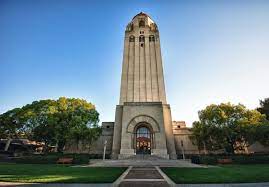
A visit to the Hoover Institution at Stanford University in California would be very rewarding, what with the archives of such as George Hill, Kenneth de Courcy, Robert Conquest, and many more available for inspection. The Library is located just down the road from where our son and his family live, in Los Altos, and in theory should be the most convenient facility to visit when next we voyage out west. Yet, after two years of separation, I can hardly see myself happily absenting myself from son, daughter-in-law and grand-daughters for days at a time, however fruitful such a visit might be. I would prefer to have a round of golf with Sylvia, James and Ashley (now 10, and very keen on the game) instead. There will not be many more such opportunities.
Yet I did recently bring part of a fascinating archive to my home. This summer I acquired, via an on-line auction, a portion of the papers of Donald McCormick, aka Richard Deacon, who wrote several books on intelligence (such as the notorious British Connection). It comprises a mixed set of letters to McCormick (but none written by him) from such luminaries in the intelligence world as Natalie Wraga, Arden Winch, Isaiah Berlin, Nigel West, and Steven Dedijer, as well as a copy of Lord Inverchapel’s last Will and Testament, and a typed statement by Alexander Foote, complaining about the quality of his interrogation by MI5 officers. Perhaps the most unusual of the items is a long handwritten letter, in German, by Karl Friedman to his sister Lizzy (Kim Philby’s first wife), written to her from the Afikim kibbutz in December 1967. It is accompanied by a few photographs, including one of Lizzy herself (below). I have no idea how these pieces arrived in McCormick’s hands, but the whole package cries out for comprehensive analysis and reproduction at some time.
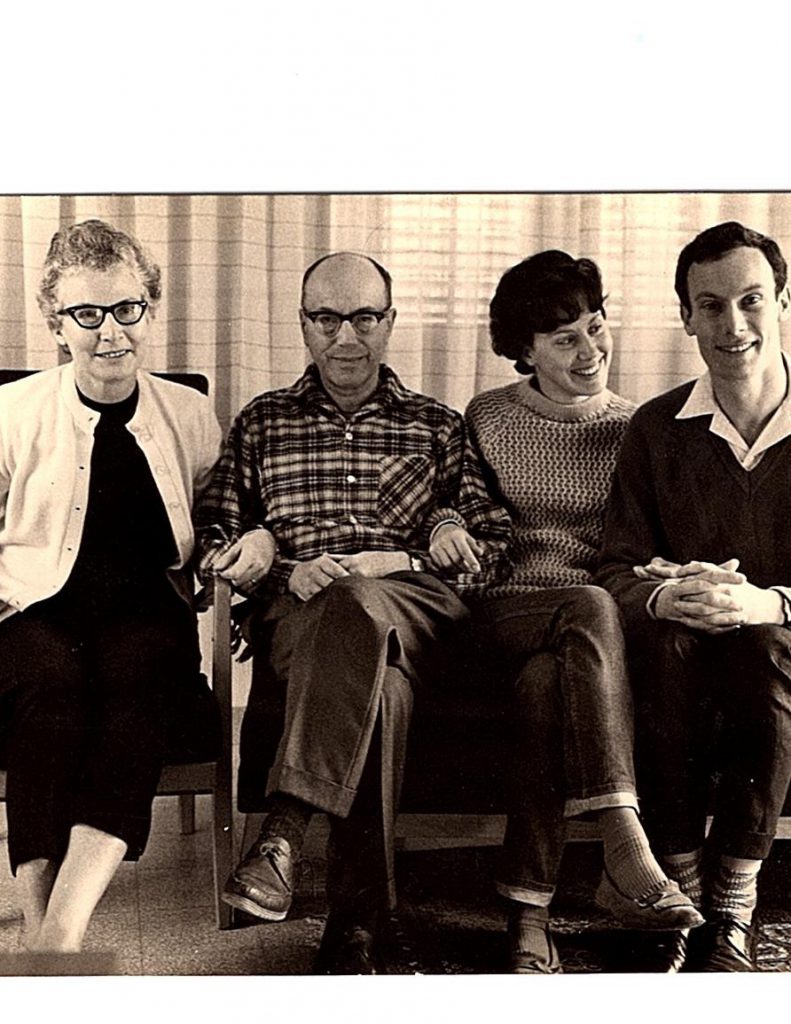
3. The Biography of Ter Braak
I wrote about my communications with Jan-Willem van den Braak in February 2019, when I indicated that his biography of the Abwehr spy, Willem Ter Braak, whose real name was Engelbertus Fukken, was going to be translated from the Dutch, and published soon thereafter in English. Well, that did not happen, but I believe a much better outcome has now been arranged. Mr. van den Braak and I had several fruitful discussions, and he embarked upon a project of deeper research that resulted in considerable changes and extensions to the original text.
I became very excited about Mr van den Braak’s discoveries, and the outcome was that I very happily agreed to part-underwrite the translation exercise. Jan-Willem worked very diligently on delving further into the sources of Ter Braak’s life, and the events leading up to his being parachuted into the English countryside in October 1940. Consequently, the new edition of his book will be available in the spring of 1922, published by Pen and Sword. I believe that he has performed some brilliant research, and done an outstanding job in explaining the complex environment in which the spy was brought up, and how he was eventually recruited by the Abwehr. What is more, the author invited me to contribute an Afterword to his book: in it I express my great enthusiasm about his account while reserving the admission that he and I may draw slightly different conclusions from the circumstances of Ter Braak’s apparent suicide. Moreover, I was also able to review the translation, and offer my own idiosyncratic comments on the text. The translator selected, while showing great skill with the English language, was not a native English speaker, and I thought that showed on occasions. I was happy to apply my own standards of English style, grammar and composition (hidebound and antiquated as they may be) in order to prepare a story that, in my opinion anyway, would provide a more fluid narrative.
The Dutch book, which appeared in 2017, was titled Spion tegen Churchill (‘Spy against Churchill’), and I pointed out to Jan-Willem that I did not think it was a very accurate, or even compelling, choice. After all, every Abwehr spy sent to the United Kingdom clearly had a mission of undermining Churchill’s campaign, and the case that Ter Braak might have been sent on a mission to assassinate the Prime Minister was tenuous at best. Spies did not normally engage in such violent acts, which might have had unexpected consequences. About a year ago, we agreed that The Spy Who Died Out in the Cold (which Jan-Willem had selected from a newspaper headline) was a more accurate and engaging title, and would provide a scenario that succinctly described Ter Braak’s unique fate – dying alone on a cold winter night in an air-raid shelter in Cambridge.
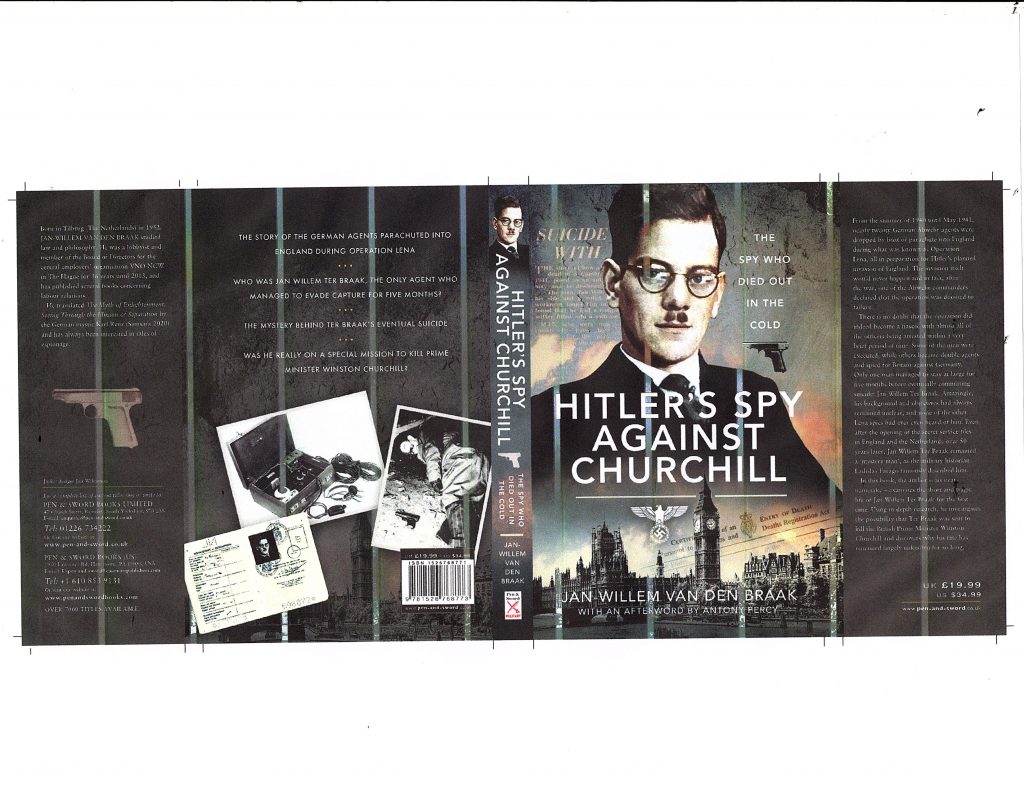
Yet the publisher unfortunately has decided otherwise – as the picture shows. She overruled our submission, based on some ‘market research’, that Pen and Sword had undertaken, where the word ‘Churchill’ is believed to be a big draw in attracting prospective buyers to a book. What it means is that the cover of the book is in my opinion a little cluttered, as the preferred title has been included as a nominal subtitle. The density of information is increased by the fact that Jan-Willem generously requested that ‘with an afterword by Antony Percy’ appear on the cover as well. That slogan does not have the appeal of a ‘Nigel West’ endorsement, but I am happy to receive a little publicity. On the other hand, the style editor at Pen and Sword was mercifully quite impressed with the fluency and drive of the text, which means that, apart from such whims that may arise from the application of the corporate ‘house style’, we should not expect too many unpleasant surprises when the book is eventually released. (It seems nearly ready to go, but I have not found an announcement on the company’s website, even though over 250 books ‘coming soon’ are listed for publication up to August 2023. We received the proofs from the publisher as I was putting this month’s coldspur to bed, with my editorial team generously giving up some of their holidays to accomplish the task.) I shall post further news of the book’s availability as soon as I receive it. It has been a great pleasure working with Mr van den Braak, who has made a major contribution to the history of espionage.
4. George Graham & “The Spies’ Spy”
I recently wrote about the strange case of George Graham, the SOE officer deputed to accompany George Hill as his cipher-clerk when Hill was sent out to Moscow in November 1941 to set up the SOE mission. The diaries of Guy Liddell had revealed that Archie Boyle, the SOE Security Officer, had informed the head of MI5’s B Division, during the investigation into the Gouzenko disclosures in October 1945, and the quest for ‘ELLI’, that Graham’s real name was Serge Leontiev. That news had in turn provoked Liddell to carry out a thorough investigation into the man’s background, and to determine what security exposures might have been raised.
I expressed my amazement that any intelligence officer worth his salt would have recommended the son of a White Russian officer for such a sensitive post in the nest of the NKVD. The Soviet intelligence service would surely have wanted to find out the man’s background and credentials, and whether he had any relatives living in the Soviet Union, and, even if they had not closely tracked the Leontiev family, would have been prompted by the man’s native speaking of Russian to take a very close interest. And, in my initial investigation into Graham’s immigration, naturalisation and matrimonial records, I discovered some rather challenging anomalies.
Since then, I have engaged a couple of London-based researchers to perform a much deeper inspection of Graham’s life and career, one from a general genealogical and biographical perspective, the other approaching the topic from more of an intelligence and military angle. That exercise is now almost concluded, and I am ready to present a startling account of Leontiev’s rise and fall in the United Kingdom, which starts with a connection to Sir Paul Dukes, and ends with a stumbling post-war role with BBC Foreign Broadcasts. I also succeeded in making contact with the family of George Graham’s uncle, Alexander Briger, whose grandson of the same name is an illustrious Australian conductor, and they have shared some remarkable reminiscences about George. I shall dedicate my January 2022 coldspur bulletin to his story.
At the same time that I wrote about Graham, I mentioned the fact that Stephen Alley (an officer in MI5, and a possible candidate for ‘ELLI’) had made a claim that he was fired from MI6 because he refused to assassinate Joseph Stalin, an assertion that appears in Michael Smith’s Six. The source of this statement lay in his archive deposited at Glasgow University, but, because of Covid, the librarians there had not been able to access the records for me. I was just considering inquiring again when I received my package from the McCormick archive, and I was bowled over to find a confirmation of the story within.
It appeared in a letter written by Arden Winch, dated June 7, 1979. Now Arden Winch (1928-1991) was not a name I knew, but I have discovered that he was a prominent writer and director of crime and intelligence TV series, such as ‘Cold Warrior’, in the 1970s and 1980s. Having just read McCormick’s (Deacon’s) history of the British Secret Service, Winch wrote to offer a couple of anecdotes. He had been performing research for a film on Sidney Reilly, which project never came to fruition, and after mentioning George Hill and Robin Bruce Lockhart, he came to Stephen Alley. The next paragraph runs as follows:
Anyway, I eventually met Stephen Alley, then retired to Bray. All the previous agents I had met had been in awe of Alley – obviously the spies’ spy. I don’t know if you knew him. He was, in appearance, the classic retired gentleman. He treated his wife with splendid old-world courtesy, which, in a way is a pity in that he carefully avoided telling her much about his work, partly because it would be dangerous for her, partly because he believed that you didn’t involve the Fair Sex in these sordid matters. He remarked that he had never risen far in the Service as he should have done. I happened to know his position, and there wasn’t much further he could have gone, and asked, why. I didn’t always obey orders, he explained. What sort of orders? He glanced, to make sure his wife couldn’t overhear, then said, “Well, it’s a little confidential. But like the time I was ordered to murder Stalin. Never liked the chap much, but he regarded me as a friend, and the idea of walking into his office and killing him – no, I said, I wouldn’t do it.” Then he lowered his voice still further. “Anyway, I wasn’t at all satisfied with the arrangements for getting out afterwards.”
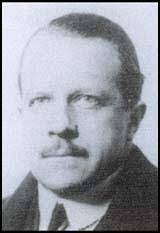
The lessons from this anecdote must be 1) that spies indeed are not reliable assassins, and 2) that, if you want a long and successful marriage, you should never tell your spouse that you were once ordered to kill a foreign despot. (Although she might, of course, rebuke you for not sacrificing yourself for the greater good of humanity, and then remind you to take out the garbage.) But I liked that bit about the Exit Strategy. And, even if an admission of ‘not liking much’ someone who was responsible for the deaths of millions of his own citizens is a troubling example of British litotes (and, after all, Churchill did go on about how much he liked Stalin), it all throws some revealing light on the Mystery that Stephen Alley became. You will not read about that in Jeffery.
5. Paperback Editions
An exercise that always intrigues me is checking what changes have been made in the paperback (or any second) edition of any book on intelligence. As I have documented before, it is well-nigh impossible to release a book on this subject that contains no errors, but the implications of fixing them are highly problematic. Of course, if egregious mistakes are discovered when it is too late to change the galley-proofs, errata slips can be inserted, but that can be very messy, and just draw attention to the oversights and misrepresentations. I made a few stupid errors in compiling Misdefending the Realm, but, in my own defence, I was editor, fact-checker and proof-reader, and one can read one’s own outpourings for only so long before succumbing to ennui and somnolence. And it is unlikely that a second edition will come out, although, for a few months a couple of years ago, an editor at the company that took over the University of Buckingham Press did express to me interest in bringing out a new edition. Nothing came of it, however.
One of the challenges is that any dramatic change to the text – apart from the correction of minor facts – will probably require changes to the Index, and that is not a task to be assumed lightly. I notice that the 1968 version of M. R. D. Foot’s SOE in France managed to maintain the same Index from the 1966 first edition verbatim. The changes demanded by the threat of lawsuits were able to be accommodated by replacing paragraphs with new text of the same length. When Patrick Marnham informed me of the upcoming paperback version of War in the Shadows, I became temporarily excited at the prospect of a radically new account of Henri Déricourt’s recruitment, based on my discussions with him. Yet, while Marnham was able to provide a fascinating new Afterword (which did not affect the Index), the text appears to be completely unchanged from that of the original hardback version.
I understand that substantial changes to a text conventionally require a new edition to be identified, and a new ISBN to be allocated. In 1968, there were no ISBNs, and SOE in France was presented as a ‘second impression with amendments’, while the reader had to work out him- or her-self exactly what had changed. By virtue of allowing more text on each page of his Preface, Foot was able to add commentary that summarized his changes, including the need to ‘modify a number of passages which gave some quite unintended personal offense’, and to respond to reviewers’ critiques. In 2002, with a wholesale re-drafting, Foot was able to supplement his 1968 Preface with a couple more pages of explanation for changes made to what the Publishers vaguely identify as ‘this edition’. It does have an ISBN now, of course, but, again, exactly what textual amendments have been made can only be determined by painstaking analysis that I have not yet undertaken. Moreover, it is astounding, to me, that, after all that passage of time, Foot did not make wholesale changes to his narrative. Yet there were surely political reasons for that.
Patrick Marnham’s paperback edition of War in the Shadows is described purely as that – ‘the paperback edition’ of the 2020 hardback version, with no obvious indication that the Postscript is new. I am grateful for it, since it refers to coldspur, and my joint research with Professor Glees, but the Postscript is undated. Nevertheless, a new ISBN has been granted: 978-0-86154-058-7, as opposed to 978-1-78607-809-4, which strikes me as an odd system, with a completely fresh set of numbers, while the ebook ISBN (978-1-78607-810-0) remains unchanged. What does that mean? That the Postscript does not appear in the current e-book version? I have no idea. What is going on here? Perhaps someone can enlighten me.
And then there is Andrew Lownie’s Stalin’s Englishman. Again, perceptive and dedicated readers will recall that, a few years ago, I had to rebuke Mr. Lownie strongly in person when, after I had supplied corrections to his first edition of the book, he incorporated the changes without giving me any credit at all. The publication of these two editions presents further paradoxes. (Both were British versions: the republication of such works in the USA, often with different titles and Americanization of spelling, is a topic that I shall not venture to explore here.) The original (2015) edition came in three formats: the hardback (ISBN 978 1 473 62736 9); the Trade paperback (978 1 473 62737 6); and ebook (978 1 473 62739 0). The 2016 paperback edition is described blandly as ‘first published in paperback in 2016’, and is given an ISBN of 978 1 473 62738 3, with the fact that a ‘trade paperback’ has already been issued apparently irrelevant. The wording does not indicate that any textual amendments have taken place. Lownie, however, made some substantive additions to his text, starting in Chapter 29, which means that the ensuing chapters start on higher page numbers, and the Index has had to be re-drafted. Some very subtle adjustments to the very lengthy Acknowledgements have been made, but without including my name (which was what really galled me!). Apart from the reproduction of extracts from some very flattering reviews, inserted as a Frontispiece, Lownie gives no indication, however, that his text has changed. That strikes me as irresponsible. It is all very strange.
Dr. Chris Smith, on the other hand, behaved impeccably. In 2019 he published The Last Cambridge Spy, a biography of John Cairncross. I tactfully pointed out to him a few chronological and logical errors concerning Arthur Martin’s visit to the USA, and Cairncross’s ‘confession’ there. Smith was very professional and thorough in his replies: we both understand the challenges of working through what can be very deceptive memoirs or archives, and he thought my published criticisms were fair. He committed to incorporating some changes for the paperback edition, but, when we were last in contact in May of this year, Dr. Smith expressed uncertainty as to whether the publisher was going ahead with the paperback edition.
This all leads up to Trevor Barnes and Helen Fry. I purchased Helen Fry’s Spymaster: The Secret Life of Kendrick, her biography of Thomas Kendrick, in 2014, the year in which Marranos Press published it. Its ISBN-13 is given as 978-1500418830. I recall it as an amateurish production, strewn with errors, and delivering little new of any substance. When the book was re-issued this summer, as Spymaster: The Man Who Saved MI6, I expressed mild interest, with no real desire to re-inspect it, but was persuaded by one or two correspondents to acquire it, as it reportedly has a brand new chapter on Kim Philby (see below). Thus I now possess a volume with a totally new identifier: ISBN 978-0-300-25595-9. Yet neither the frontispiece nor the author gives any indication that this is a new edition of a previously published book, or what changes have been incorporated. It is not clear whether the blurbs refer to this new edition, or the original. It is all highly irregular and deceptive, in my opinion. Andrew Lownie is Fry’s agent, and presumably managed the whole affair.
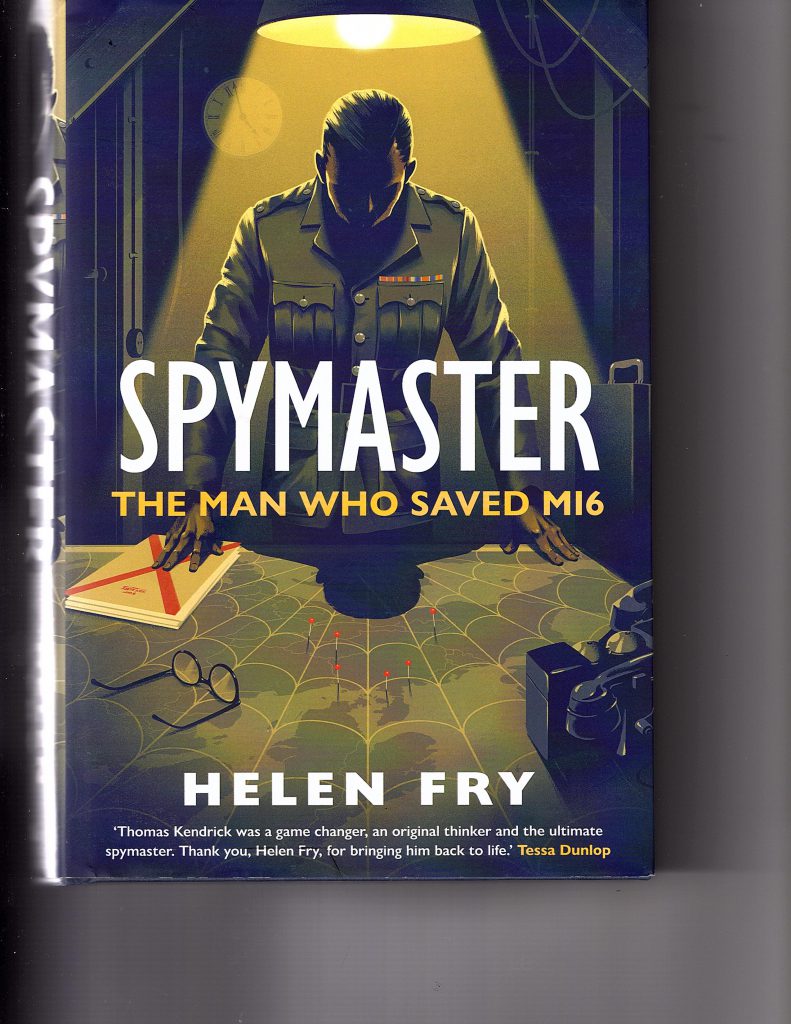
As for Trevor Barnes’s Dead Doubles, I own it in the First U.S. Edition (978–0-06-285699-9). I had submitted a number of comments (and corrections) to the author after reading the book a couple of years ago (see https://coldspur.com/five-books-on-espionage-intelligence ). I enjoyed, for a while, a productive exchange with Barnes, from which I gathered that he was overall in sympathy with my observations. And then he suddenly closed up, perhaps after I publicized on coldspur revelations that tended to overshadow his rather coy attempt to keep an identity a secret. Ever since then, I have been waiting for the new paperback edition to come out, in order to discover whether he incorporated any of my recommendations – and gave me credit! Well I read recently that it has been published, but I really do not want to have to purchase it just to verify those facts. Does anyone out there in coldspur-land have a copy, and have you managed to notice what changes and acknowledgments have been made? Please let me know if you have. (But I suspect most readers are not very concerned about these details. . . . )
6. The Non-Communicants
I do not intend to discuss here those persons who have declined to participate in the rites of the Church, but instead to indulge in some curmudgeonly and unseasonal complaints about those members of academia and journalism who maintain a stand-offish stance when approached on matters of intelligence. I have enjoyed mixed success in trying to engage prominent ‘experts’ in the field – some very fruitful, not the least of which must be the warm and detailed response from Professor Glees when I wrote to him about Isaiah Berlin and Jenifer Hart many years ago, an exchange that brought me down this long path of research. Yet I have experienced several blank responses, of which the behaviours of Christopher Murphy and Dónal O’Sullivan were the most egregious in 2021.
Earlier this year, I underwent an extraordinary series of experiences with The Journal of Intelligence and National Security. After my review of Agent Sonya was published (incidentally nominated as ‘Book Review of the Year’ by Lady Gaga), I thought that I would not offer my services again. It is a rewarding exercise if one needs the publicity, or feels a charitable need to enlighten the world, but it is very time-consuming. The Journal does not pay reviewers, it works very slowly, and makes strenuous demands on the identification of sources (a practice I heartily endorse). Thus, if I have something to say, I can more speedily distribute any commentary or critique on coldspur. Moreover, it is not as if the Journal enjoys broad readership: the institution resolutely shows that it targets it product at universities, and it is supremely expensive for an independent or retired researcher to acquire individual reports that it publishes. Its owner Taylor & Francis also publishes enhanced extracts from intelligence files at the National Archives (see http://www.secretintelligencefiles.com/unauthenticated). Professor Glees himself promotes the collection by writing here that “Few resources can be of greater use to the student of 20th century history than easy access to the original documentary evidence of how Britain’s foreign policy was shaped by secret intelligence”. But it is hardly ‘easy’ if a student is not a member of a subscribing library.
Earlier this year, however, the Journal (through the University of Aberystwyth) approached me to inquire whether I might want to review David Burke’s Family Betrayal: Agent Sonya, MI5 and the Kuczynski Network? If there was one subject that could grab my attention, this was it, and I wondered what new material Burke (who wrote The Lawn Road Flats, and The Spy Who Came in from the Co-Op, about Melita Norwood) had managed to dig up. I thus agreed – on the basis that the publisher would supply me with a hard copy, as I do not review e-books – to deliver a review for the periodical. I then waited, and waited, for the book to arrive. After about six weeks, nothing had happened, so I emailed my contact at Aberystwyth, and he promised to harass the History Press. A week or so later the book arrived, and I set to work.
I was not very much impressed. Burke did not have much new to say, repeated some erroneous claims from Co-Op, padded out his story with much familiar material, and elided even the yarns that Ben Macintyre had spun. So I wrote up my review, but, before performing the task of adding all the references required, thought I should pass my 1600-word offering by the editors in order to verify that it met their needs. But I never heard back – not even an acknowledgment. That was in August. A couple of weeks ago, however, another copy of Family Betrayal arrived in my mail-box – presumably the original dispatch, although I could not espy a date anywhere. So now I have two copies of the book, and an unpublished critique that I can surely use when I next decide to have a set of book reviews as a coldspur offering. And that will definitely be my last venture with The Journal of Intelligence and National Security.
Another academic whom I tried to contact was Calder Walton. I had rather enjoyed his 2013 book, Empire of Secrets, and noticed that he had taken up a position as Assistant Director of the Belfer Center’s Applied History Project and Intelligence Project at the Harvard Kennedy School in Boston (see https://www.belfercenter.org/person/calder-walton). Walton’s bio indicates his association with Christopher Andrew, and ‘for six years, privileged access to the archives of MI5’, a provocative claim in its own right. But what really grabbed my attention was the following: “Calder is currently undertaking two major research projects: he is general editor of the multi-volume Cambridge History of Espionage and Intelligence to be published by Cambridge University Press. Over three volumes, with ninety chapters by leading scholars, this project will be a landmark study of intelligence, exploring its use and abuse in statecraft and warfare from the ancient world to the present day.”
It occurred to me that Dr. Walton (with his very WASPish-sounding name: it is said that you can tell a true WASP if, by transposing Christian name and surname, no noticeable jarring occurs, such as with Winthrop Rutherfurd or Hudson Swafford) might not be familiar with Misdefending the Realm, or with my subsequent work on coldspur, and that the Cambridge History might be needlessly impoverished without someone in authority taking stock of some of the latest research. I thus wrote a very warm email to him, welcoming him to New England (where I used to live), and encouraging him to read a few essays on coldspur, highlighting the one concerning Dick White,that I thought would be of particular interest. And I never heard back. I notice now that I also sent him a flattering message, accompanied by a series of questions, back in 2014 after I had read Empire of Secrets, and did not receive any response then. Walton Calder – another of the Great Non-Communicants.
7. Guy Liddell’s Diaries: TWIST and Scout
I have been revisiting the full digitized version of Guy Liddell’s Diaries, this time with the objective of picking up everything he wrote about GILBERT (Henri Déricourt), Nicolas Bodington, and SOE in general. Each time I return to the journals I discover something new, since, in previous projects, I have been focused on other persons and operations, and have had to close my mind to much of the wealth of information that resides there. What I may have overlooked as insignificant when I first passed through them can appear highly important on a later project: for example, I have just discovered several nuggets involving (primarily) Liddell, Frost, Maltby and Gambier-Parry on the severe deficiencies of RSS in 1942. I wish I had used in The Mystery of the Undetected Radios this gem from September 24, 1942, when Liddell is trying to convince his boss, Petrie, about the need for more efficient mobile units to track down new spies arriving. It confirms my analysis precisely (and Liddell does not even mention the fact that the operator might move his or her location):
If he transmitted three times a week for about 10 minutes or quarter of an hour at a time we might reasonably expect to pick him up in due course. We should then have an area of some 60 miles in which to operate the M.U.s. These units were not however particularly satisfactory since unless we happen to be fairly near at the time of transmission and searching on the direct frequency we should not pick up the transmission. If the man only came up occasionally on the call sign and changed his frequency and time it was on the whole improbable that we should pick him up at all. The technical tool was not therefore a particularly efficient one. If we were called upon to operate on the Second Front we should find ourselves singularly ill-equipped.
Moreover, a major item that I had completely ignored beforehand now seems to be a pointer to the creation of the highly secret TWIST Committee (see https://coldspur.com/special-bulletin-lets-twist-again/). On August 15, 1942, Liddell wrote: “I saw Archie Boyle with T.A.R. [Robertson], Senter and Lionel Hale. We agreed that on matters of deception it was desirable to persuade the Controller to set up a small committee consisting of T.A.R., Lionel Hale for S.O.E., Montagu for the services and someone from S.I.S. T.A.R. will take this up with Bevan.” What I find remarkable about this observation is the fact that SOE, which was of course responsible for sabotage, appeared to be driving the intensified deception plans. Liddell does not explain in this entry why the London Controlling Section was not itself adequate for this role, or why the XX Committee was also considered inappropriate. Soon afterwards, however, he took pains to explain to Rear-Admiral Godfrey, the Director of Naval Intelligence (who wanted Bevan to chair the XX Committee) that that Committee’s prime role was viewed at that time as counter-espionage, not deception, a claim that is borne out by other evidence. In addition, I suspect that the group wanted a more private cabal away from the prying eyes of the LCS’s American partner (the Joint Security Control). The timing from this record looks far more accurate than the two claims that have appeared in print.
The document passed on to the Soviets by Anthony Blunt (reproduced in Nigel West’s Triplex) claimed that the Committee was set up in September 1941: that seems improbably early, as Bevan was not appointed as Controller (replacing Stanley) until May 1942. On the other hand, Roger Hesketh placed its creation as late as April 1943, which would now appear to be a deliberate ploy to minimize its operation and influence by representing it as a short-lived phenomenon taking place after the controversial events. Moreover, August 15, 1942 happened to be the exact day on which Déricourt and Doulet escaped from southern France on the trawler Tarana, which would mean that the small meeting convened by Liddell constituted a timely intervention to authorize the role of SIS/SOE in managing agents in the cause of deception. The essential members are the same as listed in the Blunt document, which makes clear that the scope and opportunities for sowing disinformation transcended the functions of the so-called ‘double agents’ working under MI5’s B1A. What is also intriguing is that Liddell describes Hale as representing SOE: Hale in fact joined SOE as Press Adviser that very same month, but it sounds as if he had a more important role if he was already having meetings with the head of MI5’s Counter-Espionage section. It also shows that Liddell was quite au fait with what was going on, and knew about SOE’s strong presence behind the scenes. In essence, this brief episode represents another shocking and important lead to follow up, with its strong evidence that the TWIST sub-committee constituted the true deception agency before the XX Committee had matured, and provided authorization for SOE’s plots. The disastrous results all originated in this initiative.
[I plan to return to this business in February 2022. I have recently read Geoffrey Wheatcroft’s excellent Churchill’s Shadow, which is predictably scathing about Churchill’s ventures with SOE, but offers little detail. More interesting is David Stafford’s Churchill & Secret Service, from which I took copious notes several years ago. At that time, however, I paid little attention to what he wrote about the Déricourt period. I shall include consideration of his treatment in my coming analysis.]
But back to the Diaries in general. They are, in my opinion, an immensely rich and largely untapped source for the study of World War II and its aftermath. Liddell reveals an extraordinary capacity for tracking any number of complex events around the world, and combines an excellent memory with attention to detail. Yet, at the same time, they disclose the weaknesses of the man, both in the way he spent his time, and in the confessional way he entrusted his true opinions to the apparently temporary secrecy of his regular record. For he must certainly have expected that they would see the light of day some time.
Nigel West’s publication of portions of the Diaries, in two volumes, is useful up to a point. Eunan O’Halpin has written a cool and incisive criticism of West’s rather erratic approach to the selection and editorial process in Volume 1 (1939-1942) – see Intelligence and National Security (2005), “The Liddell Diaries and British Intelligence History” – and I shall not try to embellish his observations here. Moreover, the published version presents extracts only from the years 1939 to 1945 – less than half of the total coverage – and many of the most controversial episodes in MI5 counter-intelligence and counter-espionage occurred in the post-war years up to Liddell’s retirement in 1953. It is a shame that nobody has commissioned a highly capable expert to edit and publish the lot: they are replete with all manner of abbreviations, acronyms, nicknames, and operations and projects apparently unnamed elsewhere that require some deep knowledge and even powerful imagination to work out. Liddell will refer to such as ‘Buster’, ‘RJ’, ‘Anthony’ in quick succession, while mostly referring to subordinates by their surnames. Many names are usually redacted (such as Jane Archer and Kim Philby), although both have escaped the censor’s blue pencil on occasions. Whole entries and paragraphs have been blanked out. Overall the Diaries range from the ordinariness of Mrs. Dale’s Diary (“I am a bit worried about J.C. [Curry]” to the high politics of the Maisky or Lord Alanbrooke Diaries. And that is one reason why they are so compelling.
What perpetually astonishes me is the amount of time that Liddell spent dictating his record, with accounts of long meetings that have taken place, or summaries of reports that he has read, or discussions he has had with civil servants, other intelligence officers (especially those in MI6, such as Menzies and Vivian and Philby), military men, or politicians, as well, of course with the regular meetings he has with his boss Petrie and with his subordinates such as Dick White, ‘Tar’ Robertson, Herbert Hart, Anthony Blunt, John Curry, Stephen Alley, etc., etc. And then there are the numerous lunches, the dinners at his club with, say, visitors from the USA such as William Stephenson, and the parties he attends that are held for departing FBI or OSS officers, or even the Soviet NKVD contingent. Moreover, MI5 officers seem to be regularly going on leave, as well as taking lengthy time off for colds and ‘flu. One would hardly conclude there was a war on, given the way that social life went on, and leave arrangements were considered sacrosanct. (see also: https://coldspur.com/the-diary-of-a-counter-espionage-officer/) I have been reminded that their equivalents in SOE worked seven-day weeks, and sixteen-hour days. It does not sound just.
And that time usage gets reflected in Liddell’s effectiveness. He did not manage B Division well. He admitted, in the run-up to the succession question as Petrie spun out his day of retirement, that he was not a good administrator, not a solid delegator, and allowed a very flat organization to operate that resulted in a good deal of confusion. Moreover, he was not a strong champion and salesman of ideas, reluctant to take an issue by the throat. His diary entries are liberally scattered with the expression ‘I personally think’, as if his private being and his professional role, and how they tackled the urgent matters of policy and practice, could be separated, and in that way he betrayed the fact that he was not forthright and persuasive enough to promote and defend what he thought should happen. It is no surprise to me that he was not seriously considered for the Director-General job – twice.
In addition, he was a poor judge of character. He was quick to criticize those in other agencies who, out of incompetence or malevolence, frustrated him, such as Vivian, Cowgill, Gambier-Parry and Maltby, but was hoodwinked, like so many others, by Philby. Yet he surrounded himself with shady characters and hollow men like Hart, Rothschild, Blunt, and Hollis – even Guy Burgess, who crops up frequently in his journals although he was not directly employed by MI5. Capel-Dunn, the model for Anthony Powell’s ghastly Widmerpool, makes some brief appearances. Meanwhile, a cast of solid, dependable characters moves around in the background – Sclater, Moreton-Evans, Cimperman, Mills, ‘Tar’ Robertson, Brooman-White, Bagot, Jane Archer and Loxley (tragically killed in an aircraft accident on his way to Yalta). Lurking continuously is the ambiguous figure of Dick White, who would outmanœuvre his boss on the path to the Director-Generalship. The whole saga would make an excellent TV series – ‘MI5 at War’, first at war with the Nazis, then with MI6, next with the Soviets, and lastly with itself. Just an idea.
So we are left with the rich insights of a highly intelligent but flawed individual, too cerebral, and not tough or political enough even for his job as Director of Counter-Espionage, let alone MI5 Director-General. Dick White outwitted him with his sharp elbows, and cool manner. Yet MI5 was betrayed overall by a ponderous government bureaucracy, and continually had to deal with the competitive wiles of MI6, which appeared to have more clout through its relationships with the Foreign Office, and through Menzies’ direct contact with Churchill. It astonishes me how, in the midst of war, so much time and energy was spent by so many persons considering the overlap of counter-intelligence activity in MI5 and MI6, and whether amalgamation of the two services should occur. Throughout the war, the debate about combining the two services, or parts of them, is ponderously engaged upon, and in the last year Findlater Stewart’s ‘terms of reference’ for investigating the two services are a constant theme.
Liddell, moreover, never came to grips with the Communist threat, always assuming that the only subversive risk would come from the Communist Party. His trust of characters like Anthony Blunt (who appears regularly in the Diaries), is quite remarkable. An article, or coldspur bulletin, on the Liddell-Blunt relationship and exchanges alone could be framed quite easily. This month I picked out a few observations from 1944 that I had overlooked before. On June 28 he wrote: “For example at the moment at any rate Russian espionage could not possibly be carried out except in the background of the CPGB”. On October 21 he cited his friend Peter Loxley, who had just returned from a discussion with Kim Philby: “Peter said he thought that Section IX were perhaps going a bit wide. He had had a talk with Kim about this. Anything in the nature of pursuing prominent communists all over the world was, he thought, a waste of time. The sort of thing should be done on a more selective basis. In other words in areas where the Soviet Govt. had vital interests.” Quite so. Thank you, Kim. Lastly, on November 27, Blunt tried to take control of Soviet counter-espionage: “Anthony came to see me about the possibility of getting assistance from Shillito. He thought the latter might bring his Russian espionage up to London and do part time in B1B. I am rather doubtful as to whether this would be a satisfactory arrangement, but I will have a talk with Roger.” Hollis would no doubt have some firm ideas.
8. In Memoriam: Geoffrey Elliott (1939-2021)
Apart from a brief conversation with Mark Seaman at Lancaster House, I believe I have ever met or corresponded with only two acknowledged alumni of MI6 (or MI5). The senior of the two was Geoffrey Elliott, who died in Bermuda earlier this year. The reason that I may have gained an entrée was that he had been taught by my father, at Whitgift School (the same institution that I attended), after the war. I gathered from reading his memoir about his father, Kavan, who was an SOE agent dropped into Czechoslovakia, that his memories of the school were not wholly negative – an impression that surprised me a little, given his exotic background and later enterprises. I thus got in touch with him through St. Antony’s College, Oxford, and we spoke once or twice by telephone, and communicated more by email. He turned out to be a very helpful supplier of insights to me during the time I was researching my thesis, and maintained a caustic and engaging sense of humour in the confidences he shared with me.
His memoir, I Spy; The Secret Life of a British Agent is perhaps his best book. He wrote another fascinating study (Secret Classrooms), co-authored with Harold Shukman, of the Joint Services School for Linguists, where he learned Russian, and he also collaborated with Igor Damaskin on a valuable biography of Donald Maclean’s mistress, Kitty Harris: The Spy With Seventeen Names. His brief profile of ‘Tar’ Robertson, Gentleman Spymaster, is no doubt his weakest book, as he admitted to me, full of anecdotal information, much of which is irrelevant to the story. He was also a very busy translator. He is listed as the translator of Rufina Philby’s Private Life of Kim Philby, and is also credited, by Nigel West, in his Acknowledgements to Triplex, as the co-translator (alongside Didna Goebbel) of the Russian documents that the NKVD itself translated from English sources when they were passed on by such as Anthony Blunt and Kim Philby. This achievement has a singular historical significance, as the British Government has not seen fit to release the English originals (if they still exist, of course). We owe it to Soviet espionage to be able to inspect valuable historical records that should be part of our documentary heritage.
When I heard about Geoffrey’s death, I sought out his other family memoir, From Siberia, With Love, published in 2004, which tells of the adventures of his grandparents’ (on his mother’s side), and which I had completely overlooked beforehand. They brought him up in London when his father was on some of his many absences. Having once escaped from Irkutsk to the United Kingdom in 1907, they somewhat improbably returned to the area, only having to flee again when the Bolsheviks took over, thus proving life’s contingency on very slender threads. I was somewhat startled to read a sentence in Elliott’s book which directly echoes (or anticipates) what I wrote in my piece A Rootless Cosmopolitan:
There is really no comparison between my grandparents’ iron-spiked experiences and my marshmallow life. They could never go back to where they were born. I can; though when I do, I feel ever more disconnected, déraciné, what Stalin called a ‘rootless cosmopolitan’, while at the same time till the day I die I shall be seen as a foreigner in the place I now regard as home.
Of all the books I have read in 2021 this is the one I have enjoyed the most. It is well-researched (although it includes a certain amount of speculation concerning his grandfather’s experiences), rich in its description of life in Odessa and in Siberia – and in London – at the beginning of the last century, and occasionally very amusing. Elliott shows a very dry wit, and a deep sense of history. I regret that I never made the hop over to Bermuda to shake his hand. St. Antony’s College offers him a tribute at https://www.sant.ox.ac.uk/about/news/geoffrey-elliott-22-april-1939-%E2%80%93-1-may-2021.
9. Philbymania
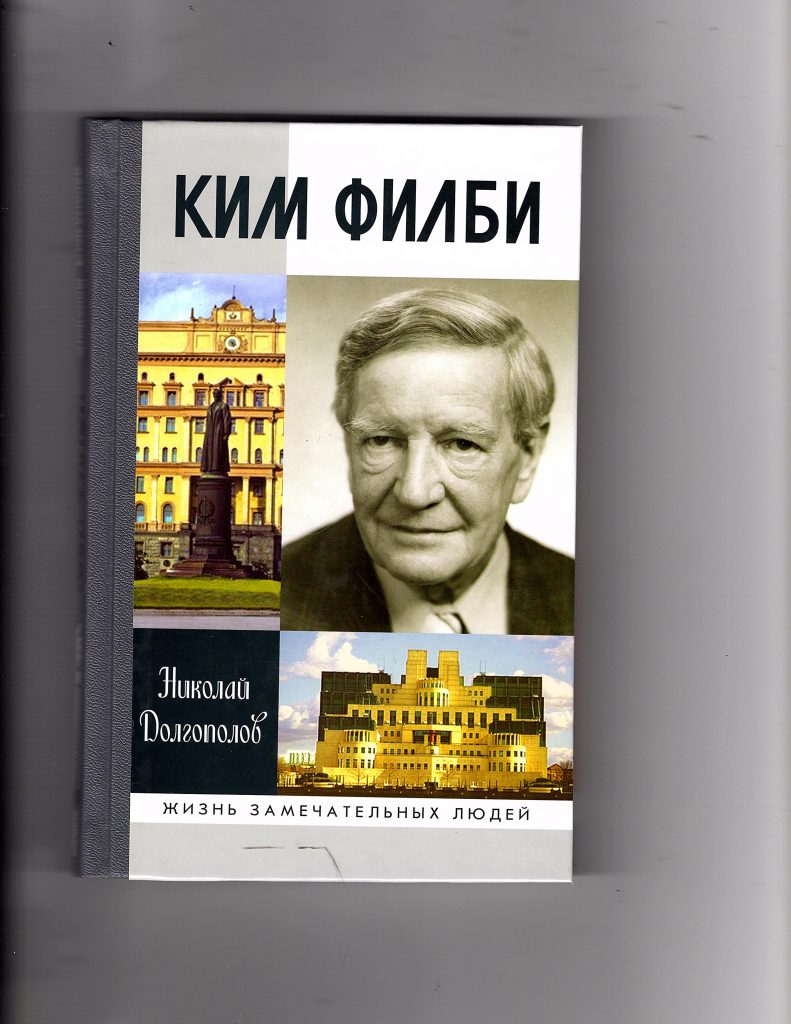
I am astonished by the number of books on Kim Philby that continue to be published. I have been gathering some volumes on intelligence by the Russian Nikolay Dolgopolov, including a biography of Philby. It is a rather unsatisfactory composition, lacking an index or any kind of sources (indexes and footnotes are so bourgeois, don’t you agree?), with the Contents placed at the back, in the conventional Russian manner. I was hoping to find some original inclusion of documents that Philby had passed on to his masters, but they do not seem to be there. No telegrams from the period between June 1941 and May 1948 are reproduced. Instead, I read some extraneous padding in chapters dedicated to each of his comrades in the Cambridge 5, and one dedicated to possible members beyond the Five. It seems that Dolgopolov does not even mention ELLI, and dismisses the idea of Hollis’s guilt with a snort. But I shall persevere with the text in the hope of gleaning something new.
Then there is Helen Fry’s book. I have not yet read it cover to cover, but the chapter on Philby seems to suggest that Philby and Hugh Gaitskell may have been working unofficially for MI6 when they were in Vienna in 1933 and 1934, a hypothesis provoked by the fact that Kendrick did not call Philby out for his aid to the communists. It sounds a bit unlikely to me (Would Philby really have taken all those risks, including marrying Litzi Friedman? What about Maurice Dobb, and his advice to Philby? What was all that subterfuge with the Anglo-German Friendship Society for? And how come Kendrick was The Man Who Saved MI6 if he was hoodwinked by Philby?), but I shall have to read the whole work, and come to some carefully considered judgment. [Postscript, December 30: I have now read the book. Much of it is practically unreadable: the author has no analytical sense, writes clunky prose, and makes all manner of unverifiable assertions, dismal errors of fact, and sophomoric observations about the war and intelligence. I am amazed that Yale University Press has put its name to it. Maybe I shall return to it at some other time.]
This summer saw the appearance of two more volumes, Kim and Jim, by Michael Holzman, which explores the linkage and conflict between Philby and James Angleton, his counterpart at the CIA, who was (according to Holzman) heavily influenced by the MI6 officer in World War 2, and then Love and Deception, by James Hanning, which analyses Philby’s time in Beirut, and the circumstances leading up to his escape to Moscow in January 1963. I have affectionately dubbed this book Kim and Tim, after his longstanding friend from Westminster School, Tim Milne, who features prominently.
I have been in contact with both authors over time, and I even get a mention in the Acknowledgments of Hanning’s work, but what I say should come as no surprise to either of them. While there may be aspects of Philby’s life on which new light can be directed (such as his journalism, as Holzman claims), I wonder whether it is worth anyone’s time packaging such insights into a new publication where so much familiar material has to be trotted out to pad the story.
Michael Holzman’s book makes much of the influence that Philby was assumed to have exerted on Angleton during World War II, but this evidence is tenuous. The intersection of their careers, moreover, appears to be focused on double-cross operations, and in this arena Holzman seems to be unfortunately at sea, since he continually misrepresents the dynamics of what ‘double agents’ involve, and their role in disinformation campaigns. Thus his book relates some very familiar accounts of Philby’s activities, complemented by a large amount of material of some historical interest that is irrelevant to the main thread. Holzman appears not to have read or internalised what I have written in Misdefending the Realm, or on coldspur, and acknowledges no references to my researches. Moreover, the book has been compiled in a bizarre way: the chapters are unnumbered, and the sources are even more inscrutable than in most such works, with no easy indication to which passages the references relate. What Holzman has shown, however, is an enterprising inspection of the work of Dolgopolov.
Likewise, Hanning (who, I know, has seen my pieces on Blunt) does not appear to have read Misdefending the Realm, and does not consider any of my evidence about Blunt’s culpability. (I am relegated to a minor footnote, with an inaccurate url, on page 299, where I have to share space with that erratic potboiler, Roland Perry, which is not very comforting.) Hanning’s highly speculative book does admittedly contain some mildly absorbing details about Lebanese politics, but they really reveal no fresh insights on the enigma of Philby’s tip-off. The enthusiastic blurbs that bedeck the cover do not seem justified to me. His text appears to consist of a long series of rhetorical questions about Philby’s motivations and behaviour, and his discoveries (such as they are) do not shed much fresh light on his subject. Inexplicably, the author William Boyd selected it as his Book of the Year in the Times Literary Supplement.
Yet the spate of books on Philby continues, all claiming to display a new angle on the enigmatic personality of the traitor. I select here a gamut of titles exploiting Philbymania that I have spotted in the publishers’ lists for 2022:
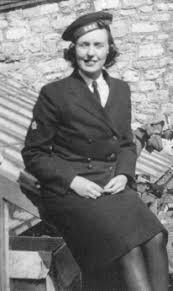
Kim and Pym: The whimsical novelist Barbara Pym met Kim at an Anglo-German Friendship dinner in 1937, and was instantly smitten. Her passion was not fully reciprocated, but the couple carried on a brief tempestuous relationship, and the trove of their correspondence was discovered – and then authenticated – by Hugh Trevor-Roper shortly before the patrician historian’s death. Kim and Pym analyzes what was one of the most intriguing romances of the twentieth century. Philby has been declared by some to be the model for Francis Cleveland in Pym’s Crampton Hodnet. Others say: ‘No way’.
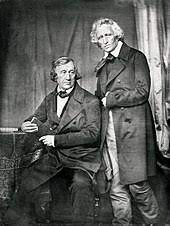
Kim and Grimm: Philby accompanied his friend Tim Milne on a trip to Germany in 1933, about which we know little. In his book Stalin’s Agent, Boris Volodarsky reveals the existence of agent GRIMM, hitherto unidentified, who was recruited by Arnold Deutsch in Berlin, and became active in London in 1934. This book closes the circle, explaining Philby’s recruitment much earlier than has been supposed to date, and describing how the master-spy was given the cryptonym of the Nazis’ favourite folk-tale authors, whose work was compulsory reading in schools. It also had a serious influence on Philby’s internal tussles with Good and Evil.

Kim and Kim: In the early days of his premiership, the North Korean leader Kim Il-Sung was considering breaking away from Soviet hegemony, but his advisers convinced him to engage Philby as a consultant, to remind him of the righteousness of the communist cause. Kim1 persuaded Kim2 not to ‘go wobbly’, and millions of North Koreans have subsequently had reason to thank the Westminster School Old Boy for their country’s happy development, celebrating their hero’s birthday every January 1 with fireworks, singing of the school song, and fan-dancing.
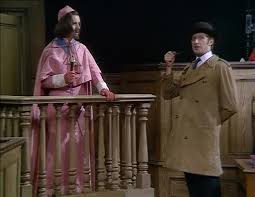
Kim and Dim: The inspiration for Monty Python’s Inspector Dim (who exposed Ron Higgins as a professional Cardinal Richelieu impersonator) was none other than MI5’s Roger Hollis, who was known not to be the sharpest knife in the drawer. Yet he had a more subtle side. Kim and Dim exposes the ploys that Philby and Hollis engineered to subvert British intelligence, including the mythology of ELLI that confused their colleagues so much, and brought much fame and fortune to Chapman Pincher.
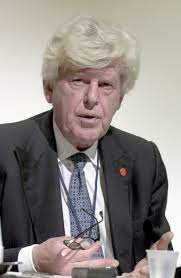
Kim and Wim: When bouffant-haired Dutch Labour Party minister Wim Duisenberg retired suddenly from politics in 1978, no one suspected that he was being groomed to be President of the Central Bank. This was a scheme contrived by the KGB and Philby to undermine Dutch finances, and Kim and Wim had several furtive meetings on neutral territory to prepare for the coup. With a Foreword by Margrethe Vestager.
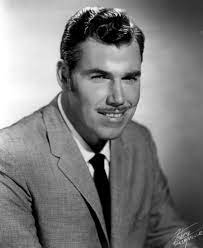
Kim and Slim: One of Kim’s private passions was a love of country-music, and listening to the Greatest Hits of Slim Whitman in the evenings with a bottle or two of brandy gave him much solace in those bleak last days in Beirut. Yet, when he escaped to Moscow, and tried to have Whitman invited on a concert-tour, the Soviet authorities refused to grant a visa to the Smilin’ Starduster, thus contributing largely to Kim’s growing malaise in the Workers’ Paradise.
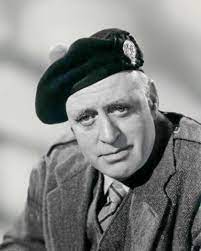
Kim and Sim: Philby was a keen aficionado of stage and screen, and had been very impressed by the performances of Alastair Sim. The oyster-eyed thespian from Edinburgh was introduced to him, and then educated him in how to control the stage. Thus Philby was able to take the entourage of reporters for a dance when he denied his role as the ‘Third Man’ at his mother’s flat in 1955. Judi Dench, citing the assessment of that performance by her husband, Michael Williams, has described it as ‘a complete lesson in acting’.
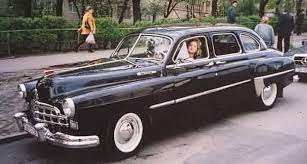
Kim and Zim: When Philby arrived in Moscow in 1963, one of his first requests was to be given a ZIM-12 limousine as a mark of his membership of the nomenklatura. He was immediately rebuked as a dangerous ‘capitalist-roadster’, since the ZIM, named after the sometime Foreign Minister Vyacheslav Molotov, had been rebranded after Molotov’s fall from favour in 1957. The two forged a bond from this episode, and Kim and ‘Stonearse’ would regularly get together to drink Molotov cocktails, listen to Slim Whitman, and read the Grimm Brothers’ Kinder- und Hausmärchen to each other until Molotov’s death in 1986.
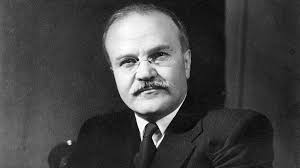
Kim and Nym: [That’s enough ‘Kim’ books. Ed.]
10. Letters to the Editor
One of these days, when I am behind in my research, I shall fill my monthly column with a selection of (mostly unpublished) Letters to the Editor of various publications. I am frequently provoked to spend the time on such exercises when I am troubled by some error, occasionally a matter of simple fact, but more frequently the expression of a misguided opinion by someone who ought to know better. One of my pet peeves is the attribution of purposefulness to the process of evolution, and I noticed that Anna Katharina Schaffner, described as Professor of Cultural History at the University of Kent and Director of Perspectiva’s Emerge project (don’t ask) had committed this error in her review of Charles Foster’s Being a Human in the Times Literary Supplement of October 15. I was thus happy that the periodical printed my letter on November 12. It read as follows:
Could Professor Schaffner be a bit more precise about her categories (review of Being a Human, October 15)? She states that ‘our woes started in the Neolithic period’, and that ‘we traded awe for convenience and control’. But then she goes on to write: “How can we ever truly understand people whose sense of self was so different from our own?” If the Professor is evidently so confused about who ‘we’ are, it does not help the rest of us in sorting out these vexing questions. Furthermore, she appears to misunderstand how evolution works, writing that our ancestors’ “brains grew in size to help them navigate ever more complex relationships”. Such relationships would have foundered irretrievably by the time such changes occurred, and, if evolution were driven by need, waiters and mothers would presumably have acquired two pairs of hands by now.
Professor Schaffner displayed that annoying manner of the preachy journalist, namely using the term ‘we’ when it is not clear whether the writer means ‘you and I’, ‘all right-thinking persons’, ‘the whole of the human race’ or any entity in between. Thus we may read of what ‘we’ have to do to achieve certain goals (e.g. ‘saving the planet’, ‘eradicating world poverty’, ‘delivering racial justice’, ‘shutting out Greta Thunberg’) without having any idea as to what the plan of action is. I noticed that Martin Vander Weyer, the financial correspondent for the Spectator, had written a book titled The Good, the Bad and the Greedy: Why We’ve Lost Faith in Capitalism. Since I regarded him as a champion of free enterprise, I wrote to ask him in what way he belonged to the ‘We’ of the title, wondering, perhaps, whether he was planning to move to North Korea. He replied: “You’ll find the book is in fact a vigorous defence of the good aspects of capitalism”, which is encouraging, I suppose, but merely shows that the choice of title was supremely silly and misleading.
On a slightly less serious note, Literary Review runs a series of modest cartoons titled ‘Illustrations to Unwritten Books’, and the example given in the October edition was ‘How Green Was My Valet’, showing a manservant suffering from severe dyspepsia. Now I very clearly recalled Kenneth Williams treating Richard Llewellyn’s 1939 classic in a similar fashion in a segment of Beyond our Ken on the BBC Light Programme about sixty years ago, only on this occasion the ’greenness’ that the valet displayed was a tint of envy rather than of biliousness. I was gratified to see that the magazine printed my correction.
I suppose this response was unique. After all, one had to be old enough to be a radio-listener from those days, one had to be an avid Kenneth Horne fan, one had to remember the episode clearly, one had to be a contemporary Literary Review reader, and one had to be eccentric enough to believe that it was worth spending a few minutes writing up the observation. Step forward, coldspur! My brother Michael came closest, reminding me of the following: “That was an excerpt from How Green Was My Valley, another in our series of a film worth remembering, which is more than can be said for the next half-hooouur”, but for some inexplicable reason he is not a Literary Review subscriber.
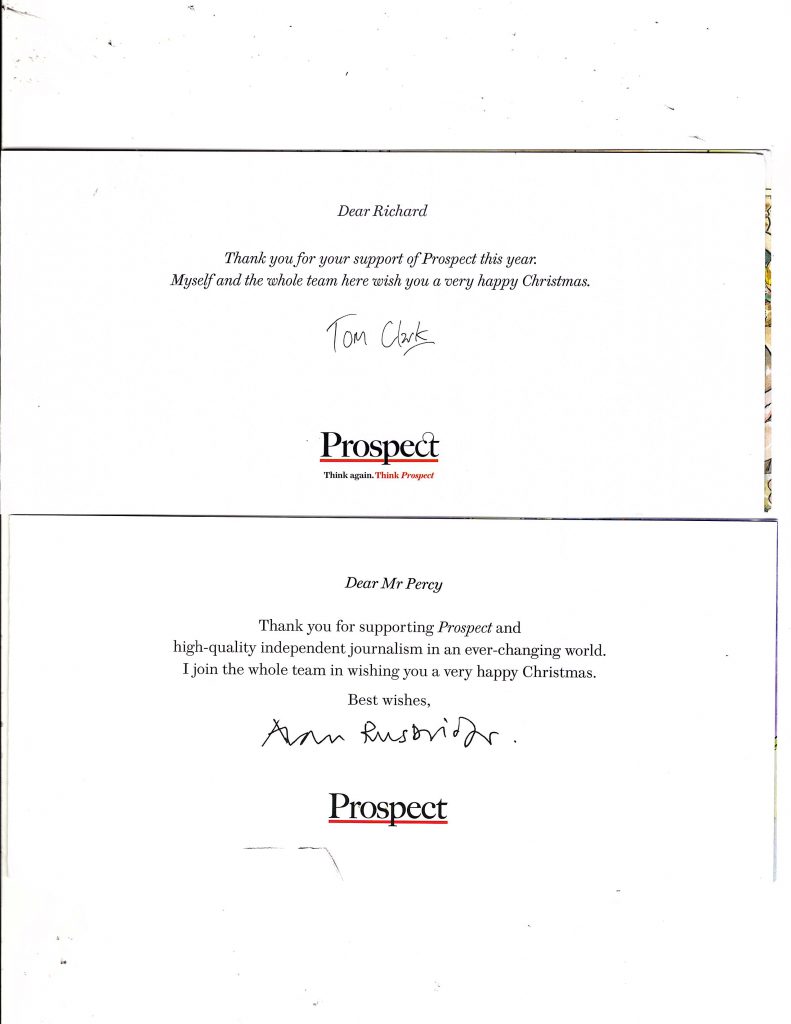
Lastly, those Christmas cards from Prospect magazine. I gave the Editor, Tom Clark, a very hard time a year ago for signing a card to me that included the horrible phrase ‘Myself and the whole team wish you a very happy Christmas’. Well, someone must have taken notice, as the curse of coldspur fell upon him, and he is no longer Editor. I see that Clark has been appointed a Fellow at the Joseph Rowntree Foundation: I am not sure what these chaps do at such institutions, but I hope he learns to write good English there, and gets lots of free chocolate. In his final editorial at Prospect, Clark stated that he would now ‘pass the reins to the legendary former Guardian editor, Alan Rusbridger’. Now I had long imagined that Rusbridger was not a mythical being, however, but a real person, and my suspicions were confirmed when I received a Christmas card from the piano-playing ex-principal of Lady Margaret Hall, this time addressed to ‘Mr Percy’, not ‘Richard’. As you can see, Mr. R has improved the syntax, although it appears that Guardian journalists are still not quite sure that ‘the team and I’ (or ‘the team, including me’) would be an appropriate way of identifying themselves. Or perhaps, simply ‘we all’, like the Gang I introduced at the beginning of this post?
This month’s Commonplace entries can be seen here.

Re. Willem ter Braak /Engelbertus Fukken. Rummaging on the internet I found that his death certificate says the cause of death was “Suicide by shooting himself through the head with a revolver…”, whereas a photo of the scene of his death on his Wiki page shows an automatic pistol next to the body. Just the common misnomer when people refer to a handgun? Or something more?
Have you read https://coldspur.com/the-mystery-of-the-undetected-radios-part-3/ , John? Please comment further!
Thanks, Tony.
Tony, I was so shocked to read of your recent hospitalization, and so glad that you are securely back in harness. Waited in a corridor for 4 hours?? Were you flown over to endure the tender mercies of our NHS over here then? Look after yourself, we need you. Best wishes,
Thanks for your kind wishes, John.
The speed with which the Ambulance Service arrived and treated me was in direct contrast to the processes at the hospital. First of all, I was taken to the wrong hospital (Novant in Shallotte, as opposed to Novant in Wilmington, where they have a special Cardio Clinic). And then they were undergoing a strict triage process, because of Covid, drug overdoses, shootings, etc.. (This is rural Brunswick County.) Fortunately, the nitroglycerin and aspirin had removed the pain, but my blood stress levels were high.
I am doing fine now, and looking forward to building up exercise in the pool very soon.
Hi Tony – I got a discussion going on a Cambridge Nostalgia facebook group about Braak which produced a few interesting titbits. You should be able to see them on this link. Which brings me onto saying that you should have a facebook profile. It’s crazy not to. All the immense labours you go to here are a bit wasted if they don’t have an outing on ordinary social media. If nothing else it will remind interested people (ie moi) to read new stuff as it appears. YOu can control your privacy on it reasonably well https://www.facebook.com/photo/?fbid=3005797006407929&set=gm.1173426133164213
Couldn’t get the link to work, David, but I did make an application to join your group, and I have posted an item on my Facebook page. Search out Tony Percy, and become a friend!
Thanks for the suggestion. I have used FB sparingly to advertise coldspur before.
P.S. Found your post when I used the link on my iPad, where I have automatic sign-on to FB.
Cheers Tony for that – I’ve just sent you a friend request on FB. I’ve recently been posting photos taken by the late George Galllie. Including one he took from inside Thames House in the 1940s! IF you are going back onto the ELLI theme do have a crack at exploring Sir Charles Ellis who was on the Tube Alloys group I think….the Maud group maybe. I forget which. There is a link between him and Gallie which is perhaps mildly interesting. Not saying ELLI was this Ellis but it’s got to be worth exploring in full if only to eliminate…
Hello Tony (if I may) – I’ve read so many of your posts I feel I must have met you (which of course, I haven’t)!
I too was shocked to read about your medical problems and I do hope you have recovered.
Your posts are most engaging and I have greatly enjoyed reading them and the comments, as I have been on a short leash due to COVID.
One suggestion for your blog. I find it difficult to read on the screen and printing the page seems to make the formatting, at least on my printer, go haywire.
Might I suggest that the posts also be available in pdf format? I do not know how you compose your posts, but if you do in for instance Word, making a pdf of that document would be super helpful. At present I have a young friend who turns (I think by “cut&paste”) the page into a nice pdf for me and prints it but she is soon to be off studying at the university. You posts are details and long, and I much prefer sitting in my arm chair, with a slightly larger type.
David Copin suggested you have a squiz at Charles Ellis, better known as Dick Ellis. He was an Australian-born British intelligence officer, who worked in SIS (and possibly in Dansey’s Z network) and later (in the very early 1950s) was involved in setting up the Australian Secret Intelligence Service. Ellis was married to a White Russian at one point and there is strong evidence he spied on the British for the Nazis and the Soviets, however, some who have studied his case say this is not true.
I made some comments previously, but lost my email long on so, I’ll have another go.
Dick Ellis was second-in-command to Stephenson at BSC. I read somewhere that Stephenson had offered after WWII to sue those who alleged that Ellis had spied for the Germans and the Soviets.
Good to hear from you, Will! Thanks for your kind message. I am doing fine now.
I have occasionally offered to send any reader a copy of the blog in Word format (I do not have a license for Postscript Create), as I have imagined that some (like you) would prefer to have a printed or simply searchable electronic format to peruse. I shall repeat this offer next month, and set up an automated list of those who want to receive the blog that way.
Give me a bit of time to respond to your other fascinating message!
Tony.
Hello Tony
Thanks for your reply. I’d certainly sign up for a word or pdf vervion. My friend told me she uses “Libre Office” which has pdf built in.
I also meant to say I live out of town, with patchy internet – before there was none, so I guess some improvement. Saving the blog posts to read later is, apart from the reading convenience, useful given my patchy web access.
I’m really glad you have devised an archive plan; the discussions and blog posts are really enjoyable to read but also thought provoking.
My suggestion which I may have garbled was that an Ellis who should be included in the roster of different Ellis’s was the War Office scientist Charles D Ellis (later Sir) The reason he is important is that he was a top level nuclear man from the earliest days. A google around will reveal he was a man who knew top level secrets. I partly know about him because the boss of my late adoptive father who both had senior roles in the British atomic Bomb project was seemingly working for this Ellis chap. Now I’ve long since forgotten whether this Ellis was whiter than white or not but I’m fairly sure he should be considered if only to be excluded from the narrative..
In regard to your comments some time ago on Kim and Jim, which are similar to those in the CIA’s journal Studies in Intelligence: James Angleton arrived in London in January, 1944, with no experience in counterintelligence. At that time Kim Philby was a central figure in MI-6, Section V, counterintelligence. They worked together there until November, 1944, when Philby moved to Section IX of MI-6 and Angleton went to Italy, OSS-X-2, where his arrival was seen as benefitting that unit. At the end of WWII, when OSS was dissolved, Angleton went to London to seek advice from Philby as to how to continue the X-2 organization. It seems that the burden of proof concerning the Angleton and Philby is on those who would deny their protege/mentor relationship.
There is no doubt, Michael, that Philby and Angleton ‘enjoyed’ (if that is the right word) some kind of relationship in counter-intelligence. But whether it was substantial enough to be explored in a book-length study is another question. I recall that, last November, you wrote me a message that read as follows: “I would not encourage you to read ‘Kim and Jim’. It may give you indigestion.” That would seem to be a less than enthusiastic endorsement by an author of his contribution to the lore of writing on intelligence matters.